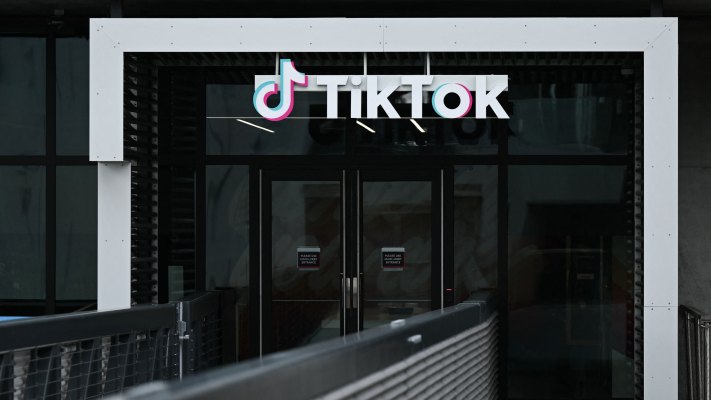ByteDance, the Chinese owner of TikTok, is back in the news. The company recently offered to buy back its stock from its employees, but the issue is, it’s valuing itself at around $223 billion, which is about 26% less than the $300 billion at which it previously offered to buy back its own equity.
So does the valuation cut mean that ByteDance is a struggling business? Not in the slightest.
The Exchange explores startups, markets and money.
Read it every morning on TechCrunch+ or get The Exchange newsletter every Saturday.
 On the contrary, ByteDance is an insanely good business. The company’s 2022 and Q1 2023 results point to a business that is quickly approaching annual revenue of $100 billion, and more interestingly, a profitability profile that’s similar to some of the U.S.’s most valuable tech giants.
On the contrary, ByteDance is an insanely good business. The company’s 2022 and Q1 2023 results point to a business that is quickly approaching annual revenue of $100 billion, and more interestingly, a profitability profile that’s similar to some of the U.S.’s most valuable tech giants.
Just look at how the company has performed over the past few years:
- 2020: Revenue more than doubled, per Reuters, to $34.3 billion, with an operating loss of around $2 billion.
- 2021: Revenue rose 70% to around $58 billion, according to Reuters. In the same year, the company generated EBITDA of about $14 billion, per the FT.
- 2022: Revenue expanded around 38% in 2022 to just over $85 billion, according to the WSJ. Operating profit came to more than $20 billion, per the same source. The FT reported that its EBITDA came in at around $25 billion.
It’s impressive to see a company scaling its revenue from $34 billion to more than $85 billion in the span of just two years, but it’s downright insane that ByteDance pulled that off while also going from an operating loss of $2 billion in 2020 to an operating profit of more than $20 billion. What’s more, the WSJ reported that ByteDance had an operating profit of nearly $6 billion in Q1 2023, nearly double its Q1 2022 result.
Such results have cleanly catapulted ByteDance into the big leagues. For reference, Meta reported operating income of $7.23 billion in the first quarter of 2023, which means ByteDance is within spitting distance of its U.S. rival.
How is ByteDance managing all this? TikTok’s massive reach and ability to drive billions and billions of dollars in advertising revenue certainly isn’t hurting, and its other businesses Toutiao and Douyin are nothing to scoff at either. And given that its profitability improved in the first quarter of this year, it doesn’t look like business is slowing down.
Still, ByteDance’s valuation of $223 billion is only 28% of Meta’s market cap of $789.5 billion. Comparing their revenue multiples, ByteDance would be worth 2.6x times its 2022 revenue, while Meta enjoys a price-sales multiple of 6.72x its Q2 2023 revenue of $32 billion, per Yahoo Finance.
I am not going to argue that ByteDance deserves the same multiple as Meta, but the massive gap between the effective valuation that ByteDance is offering its shareholders and what the public markets have awarded Meta makes me scratch my head.
A few factors could explain why ByteDance is currently cheaper than its comparables in other countries. First, there’s the matter of where the company might list. Given the geopolitical and economic tensions between the United States and China, it’s not clear if ByteDance will follow its Chinese tech predecessors in pursuing a dual listing in the United States in addition to its home market. It seems likely that the company will do a primarily domestic IPO and end up being valued according to local norms.
That could be a key reason why the company is slimming its valuation. The valuation gap between Chinese and U.S. companies has widened this year, reaching nearly a negative 50% valuation differential on a price-to-earnings basis. So if we value ByteDance according to U.S. norms, its worth almost doubles to $446 billion, lending it a multiple of more than 5x its 2022 revenue. That is much closer to what Meta is trading at today.
Meta has other lessons for us, too: When the economy wavers, the company’s revenue growth slows and it actively curtails costs. Many companies have jumped through those hoops in recent years, and ByteDance has similarly also worked to cut costs. What’s more, amid the economic uncertainty in its home market, ByteDance could have to tell its own story and convince investors that its exposure to China is an asset, not a risk.
No matter; the data is clear that ByteDance is doing incredibly well. The price attached to the business is secondary to the results themselves, after all.
